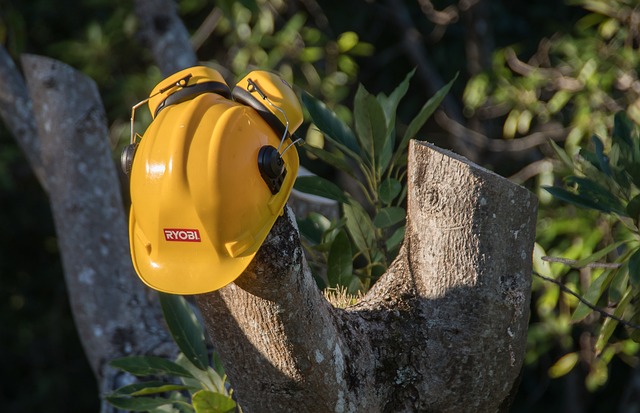In today’s fast-paced world, noise is becoming a constant nuisance that is harming your hearing health and impacting the overall quality of your life. The worst part is you don’t have to work in mining or construction, use a lawnmower, or attend a music concert to have your ears exposed to dangerous noise levels. Noise is all around you, including loud music and traffic.
When your ears are exposed to loud noise over extended periods, it leads to irreversible tinnitus and hearing loss. With 5% of the world’s population affected by noise-induced hearing loss, you cannot but pay attention to taking proactive steps that will protect your hearing health before it is too late.
This blog demystifies the importance of protecting your hearing health and the different types of hearing protection.
Table of Contents
Understanding The Impact of Noise Levels On Hearing
The world of hearing protection is diverse. Before delving into the different types of hearing protection, you must understand the irreversible consequences of prolonged exposure to loud noise. This will tell you why you must never take hearing protection for granted.
Typically, anything above 85 dB is detrimental to your hearing, and this includes motorcycles, hair dryers, gunshots, chainsaws, and power tools. Your ears are also exposed to loud noise levels when you are attending sporting events, nightclubs, and music concerts or engaging in noisy activities like mining, construction, etc. When your ears are continuously exposed to loud noise levels for extended hours, your hearing can be severely impaired.
According to NIDCO (National Institute on Deafness and Other Communication Disorders), continuous exposure to noise of more than 85 dB for 8 or 9 hours or 90 dB for 2 hours can result in NIHL. This irreversible condition manifests as a gradual decline in your ability to hear, especially high-frequency sounds. Initially, you may hear a ringing sound in your ears, or the sounds may seem muffled. As the condition progresses, you will have difficulty understanding speed, and then, eventually, you will lose your sense of hearing. Once you have lost your sense of hearing, there is no way to reverse the damage. You will have to depend on hearing aids your entire life or live with damaged hearing.
The primary reason why hearing protection matters is because NIHL significantly impacts the quality of life and results in the following:
- Anxiety
- Depression
- Social isolation
Fortunately, the good news is taking proactive measures to protect your ears from harmful noise levels can prevent NIHL and help you preserve your sense of hearing for years to come.
Exploring The Different Types of Hearing Protection
Now that you know the importance of protecting your ears, let’s look at the different types of hearing protection at your disposal.
- Earplugs
Earplugs are devices that are inserted in the ear canal to protect your ears from loud noises and foreign bodies, intrusion of water, and excessive wind or dust. When worn, they reduce the noise levels reaching your ears and help ward off NIHL. The different types of earplugs available are:
- Custom molded earplugs – Custom hearing protectors offer the highest level of protection and fit. These earplugs are individually molded according to the specific shape of your ear canal.
- Disposable foam earplugs – They are made of moldable, soft foam that expands to fill the ear canal. These earplugs are not reusable.
- Pre-molded earplugs – They come in various sizes and are made of different materials like foam or silicone. They offer a customized fit.
- Flanged earplugs – They have a wider base that rests against the outer ear, providing stability.
Consider the noise levels you need protection from and prioritize comfort and fit when choosing earplugs.
- Earmuffs
Earmuffs are hearing protection devices that are worn over the head or behind the neck. They offer consistent protection against loud noises, and one size fits most heads.
For people who wear helmets or glasses, earmuffs are a better option. They are compatible with other equipment.
Electronic earmuffs are also available to allow users to hear ambient sounds and conversations while attenuating harmful noise levels. This option is perfect for construction workers, hunters, and musicians.
How Do You Choose The Right Hearing Protection?
- Noise level – Think of the noise level your ears will be exposed to when choosing hearing protection. If the noise levels are higher, you must choose hearing protection that offers higher NRR protection.
- Comfort – Comfort is a primary factor to consider because you will be wearing the hearing protection device for extended periods. If it causes you discomfort, you won’t be able to wear them for several hours.
- The fit – The hearing protection must fit your ears properly so it can provide you with optimal protection. For instance, if you are choosing earplugs, they should seal your ear canal effectively. If you are opting for earmuffs, they must create a comfortable seal around your ears.
- Environment – You must consider the environment in which you will be using the hearing protection. For example, earplugs are an ideal choice in situations where communication is key. Earmuffs cannot be worn if you are working in a humid or hot environment.
- Cost – The price of hearing protection varies. You have to decide how much you are willing to spend to protect your hearing.
Additional considerations include the replaceability and maintenance of the hearing protection device. If you work in a noisy environment or are constantly exposed to loud noise, it would be better to invest in a reusable hearing protection device that can be easily cleaned and maintained. If you are opting for disposable hearing protection, ensure you have enough of them to protect you when the need arises.
Are you unsure of the type of hearing protection you need? You can consult a professional audiologist to seek guidance.
The Bottom Line
Hearing protection is a critical tool for protecting your ears from the harmful effects of noise. By understanding the different types of hearing protection and their functionalities, you can make an informed choice. This will protect your hearing and ensure you can maintain your pristine sense of hearing for years to come.
Featured Image by sandid from Pixabay




